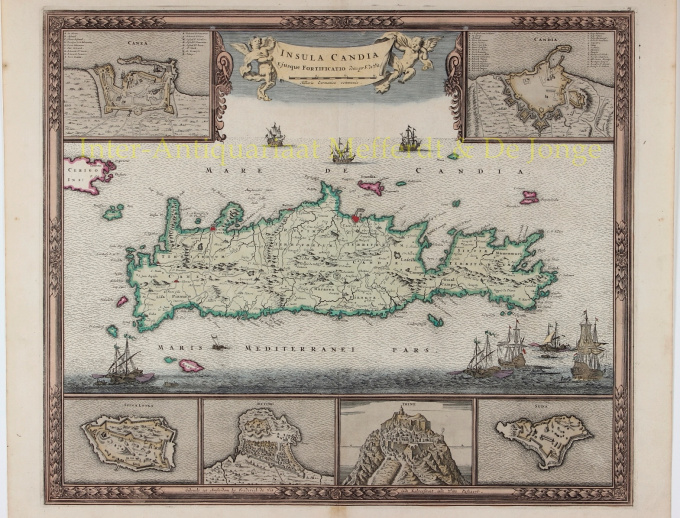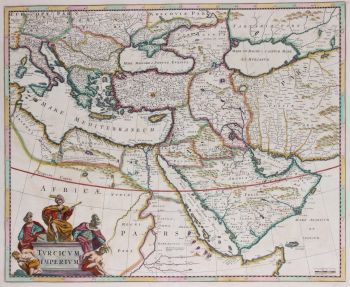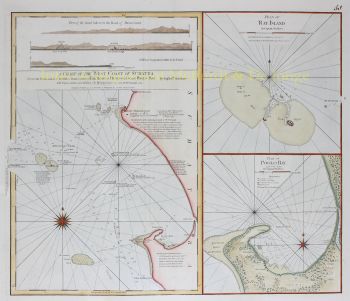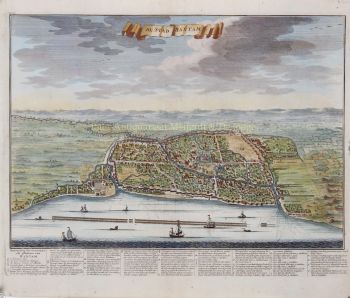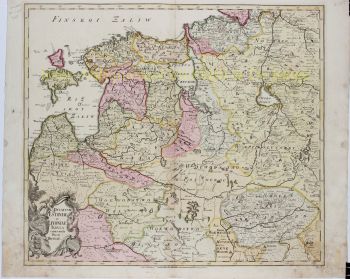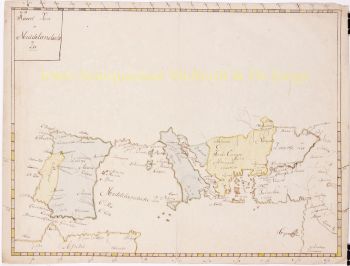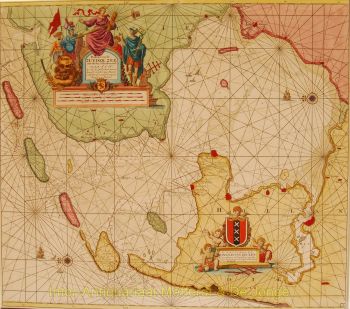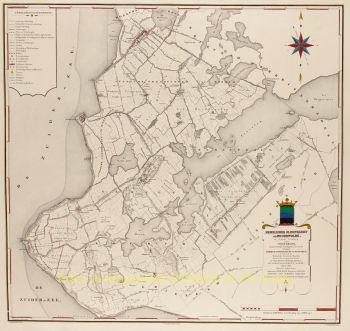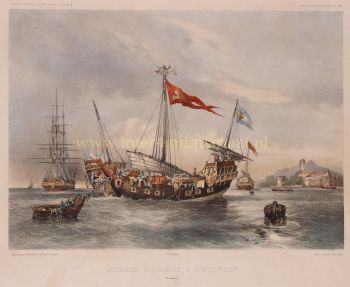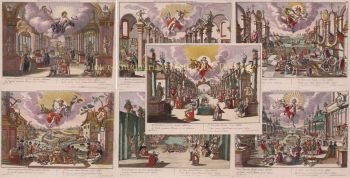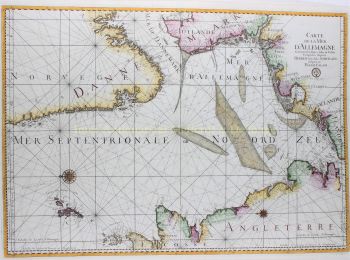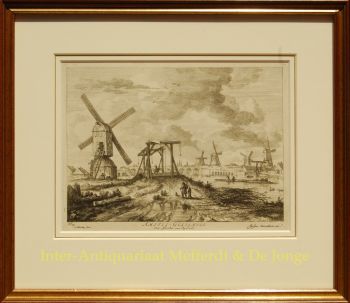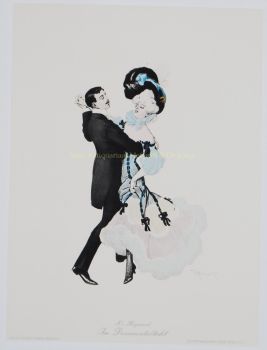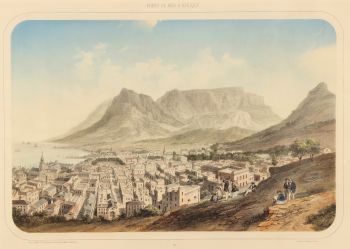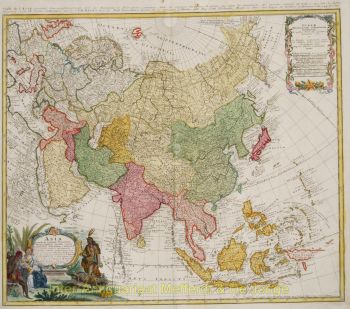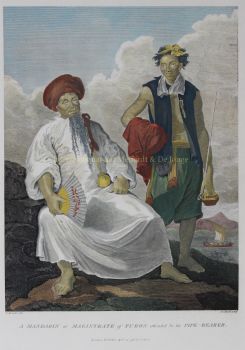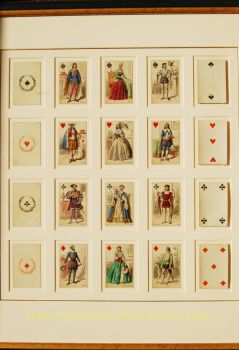Karte von Kreta 1680
Frederick de Wit
€ 1.450
Inter-Antiquariaat Mefferdt & De Jonge
- Über KunstwerkMAP OF CRETE "Insula Candia Ejusque Fortificatio. "Copper engraving by Frederick de Wit, published in Amsterdam c. 1680, with original hand colouring. Size: 46 x 54,5 cm. One of the most decorative maps of Crete, based on the map by Sébastian de Pontault Beaulieu, a French military engineer who had mapped the fortifications of many Mediterranean islands. His map of Crete was published in 1674, only five years after Crete had fallen to the Ottomans after a 21-year siege (the longest siege in history). The Siege of Candia [modern Heraklion], the capital of Crete, was the central event of the sixth Turkish-Venetian War, better known as Cretan War, or War of Candia. It was a conflict between the Republic of Venice and her allies (the Knights of Malta, the Papal States, French volunteers, and pirates from Mani) against the Ottoman Empire and the Barbary States, fought over the Venetian possession of Crete. The war lasted from 1645 to 1669, and was fought in Dalmatia, Crete, and in numerous naval engagements in the Aegean Sea. On the map the seas around the island are filled with galleons and galleys representing this epic struggle. Above the map the title is on a banner held aloft by putti, and the corners have plans of the towns and fortifications of Chania and Heraklion. Under the map are plans of the fortifications of Spinalonga, Rethymno, Tylissos [Thine] and Suda. Price: Euro1.450,-
- Über KünstlerFrederik de Wit wurde als Frederik Hendriksz geboren. Er wurde ungefähr 1629 in einer protestantischen Familie in Gouda, einer kleinen Stadt in der Provinz Holland, einer der sieben vereinigten Provinzen der Niederlande, geboren. Sein Vater Hendrik Fredericsz (1608, 29. Juli 1668) war ein Hechtmaecker aus Amsterdam, und seine Mutter Neeltij Joosten (gest. Vor 1658) war die Tochter eines Kaufmanns in Gouda. Frederik war am 29. August 1661 mit Maria van der Way (1632 - 1711), der Tochter eines wohlhabenden katholischen Kaufmanns in Amsterdam, verheiratet. Von etwa 1648 bis zu seinem Tod Ende Juli 1706 war De Wit lebte und arbeitete in Amsterdam. Frederik und Maria hatten sieben Kinder, aber nur ein Franziskus Xaverius (1666 - 1727) überlebte sie. Bis 1648, während des Höhepunkts des niederländischen Goldenen Zeitalters, war De Wit von Gouda nach Amsterdam gezogen. Bereits 1654 hatte er eine Druckerei und ein Geschäft unter dem Namen "De Drie Crabben" (die drei Krabben) eröffnet, der auch der Name seines Hauses in der Kalverstraat war. 1655 änderte De Wit den Namen von seinem Laden an die "Witte Pascaert" (die Weiße Karte). Unter diesem Namen wurden De Wit und seine Firma international bekannt.
Sind Sie daran interessiert, dieses Kunstwerk zu kaufen?
Artwork details
Kategorie
Related artworks
- 1 - 4 / 4
- 1 - 4 / 24
- 1 - 4 / 12

